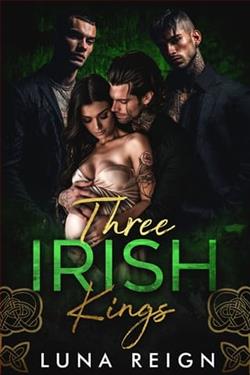Page 14 of DATE
Seeing her so focused on the pigments, Da Vinci leaned in to explain each one.
"This is Turkish red, imported from the Ottoman Empire. It’s probably some kind of madder root ground into powder."
He casually opened another jar and continued, "This is yellow made from resin and plant juices. It’s not very pure, so the color isn’t as bright."
"What about the blue?"
"Blue is the most expensive pigment," Da Vinci seemed to remember something, letting out a slow sigh. "To get this, you have to grind gemstones into powder. Normally, we rely on the nobles for supplies."
Hedy watched him, and suddenly something flashed in her mind.
She remembered a blue, pure and bright, as clear as the Mediterranean.
That blue was called copper sulfate blue.
But getting copper sulfate wasn’t something that could be done immediately.
Back when she was still the young lady of the Kiesler family, her favorite subject at school had been chemistry.
Even when she was in her seventies or eighties, during media interviews, she would still laugh and reminisce about conducting experiments, with a touch of nostalgia in her voice.
Unfortunately, she had ended up becoming an actress, and never had the chance to achieve anything in that field.
Now, watching Leonardo busying himself with his painting again, Hedy tried to mentally sketch out chemical formulas, struggling to pull out the many memories stored in her mind.
Copper sulfate... how was it synthesized again?
Copper was easy to find anywhere, and copper oxide was even easier.
But sulfuric acid?
She pondered these trivial matters, occasionally glancing at what Da Vinci was painting.
He also sketched with his left hand, and his method of painting was the same as his writing—he drew from right to left.
But after spending ten days or so with him, Hedy gradually realized that this man had a rather troublesome habit.
He was incredibly—incredibly—fond of procrastination.
When he was in a good mood, he could draw from the first line to the last, sometimes even adding color, but he never seemed to finish a painting.
Most of the sketches in the room were half-finished.
Anything that could be done today was always delayed until tomorrow. Even then, he'd barely make a few strokes, or just glance at it before delaying it again until the day after.
What was even more frustrating was that there were six or seven completed paintings sitting around, yet he would randomly start on something else. A new painting would go up on the easel, and before long, he’d turn back to study cannons and flying machines.
Couldn't he just focus and finish one thing?
At first, Hedy couldn’t quite understand why old Da Vinci would keep insisting on instructing his son. But after quietly waiting for several days, she realized that this man had no sense of urgency when it came to deadlines.
He’d wake up in the morning and go for a stroll, then study frog dissections, or perhaps read a couple of books of poetry.
After lunch, he’d go out to listen to a lecture, take a walk around the Florence Cathedral, and then come back to study candle designs.
He was always doing something, but never coming back to work.
Between his prayers and Sunday Mass, there truly wasn’t much time left for painting.















